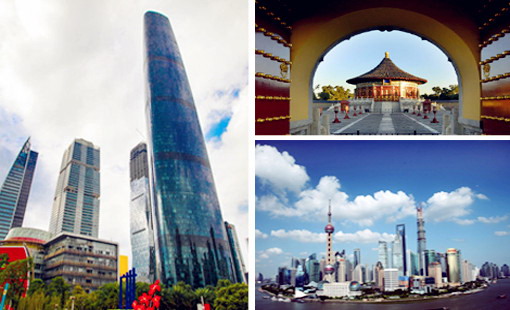China to regulate water supplies amid water diversion
Updated: 2013-08-10 16:17
(Xinhua)
|
|||||||||||
BEIJING - A draft regulation concerning water that is supplied to areas that are part of a south-to-north water diversion project was published for the purpose of soliciting public opinions on Friday.
The draft was posted on the website of the Legislative Affairs Office of the State Council.
The draft will regulate the way water is supplied by a water diversion project that will divert water from South China to the arid north, according to a statement from the Legislative Affairs Office.
Water supply plans for different regions should be sanctioned by the State Council, the draft says.
Regions that benefit from the project should strictly regulate groundwater exploitation, improve their local environments and eliminate or restrict the development of industrial, agricultural or construction projects that consume large amounts of water or create large amounts of pollution, it says.
The regions should also strengthen water quota management in order to save water, according to the draft.
The draft says water sources and regions along the project's supply routes should enhance pollution treatment so as to ensure the quality of their water.
It stipulates criteria for the demarcation of water conservation areas, as well as measures for water pollution prevention and treatment regarding industry, agriculture and water-based transportation near water sources and along diversion routes.
The draft also covers the responsibilities of maintenance units.
The south-north water diversion project was conceived by former Chairman Mao Zedong in 1952. The State Council approved the ambitious project in December 2002 after debates that lasted nearly half a century.
The project, which will be built at an estimated cost of 500 billion yuan ($81 billion), has aroused global concerns over land use, possible regional climate changes, environmental damage, impact on agriculture and suffering caused by massive relocation efforts.
The project is expected to divert 44.8 billion cubic meters of water annually from the Yangtze River and relieve water shortages in North China by 2050.
Construction on the project's 1,467-km eastern route began in December 2002. The route is expected to supply water to north China by the end of 2013.
Related Stories
Shanghai sharply increases water fees 2013-07-31 10:49
Yangtze River conservation project announced 2013-07-10 16:51
Nations mark opening of joint water project 2013-07-09 07:14
New water park makes splash in Shanghai 2013-07-08 13:18
A growing thirst for water safety 2013-06-28 07:51
Today's Top News
Minors going online to buy smokes
Forbidden City bans lighters, matches
Israelis, Palestinians kick off peace talks
Manning 'sorry' for US secrets breach
Snowden case not to affect US-Russia talks
Over 200 dead after Egypt forces crush protesters
Slowing economy takes toll
UN seek private firms' help in curbing HIV/AIDS
Hot Topics
Lunar probe , China growth forecasts, Emission rules get tougher, China seen through 'colored lens', International board,
Editor's Picks

|

|

|

|

|

|





